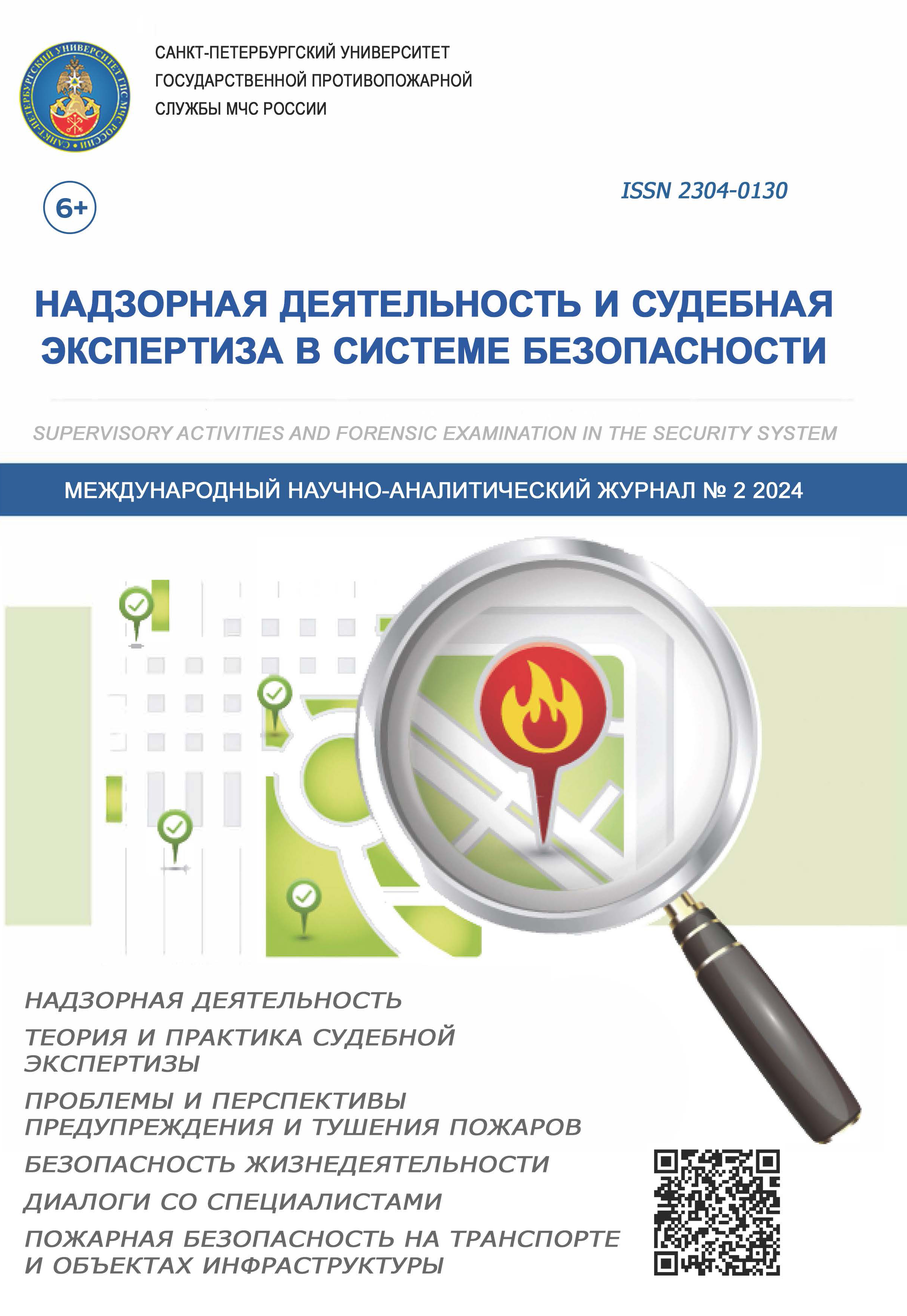Russian Federation
Using experimental data available in the literature the impact of the molecular structures of cycloalkanes and aromatic hydrocarbons on the auto-ignition temperature is analyzed. Based on contemporary studies of auto-ignition kinetic processes of cyclic nonaromatic and aromatic hydrocarbons, the connection between chemical structure, bond strength in the molecule and features of radical mechanisms of oxidation processes with the auto-ignition temperature is shown. It is noted that unsubstituted cycles usually have the highest auto-ignition temperature. The increase in the structure of substituents the number of methyl groups and double bonds capable to conjugate with benzene ring contributes to an index increase. Alkyl side chains located in the ortho-position, as well as the elongation of the chain of alkyl radicals attached to the ring, reduce the auto-ignition temperature. Polycyclic aromatic structures have a lower auto-ignition temperature than structurally similar benzene derivatives.
cycloalkanes, aromatic hydrocarbons, auto-ignition temperature, fire hazard
1. GOST 12.1.044–89*. Occupational safety standards system. Fire and explosion hazard of substances and materials. Nomenclature of indices and methods of their determination. Access from the information and legal portal «Garant».
2. Alexeev S.G., Alexeev K.S., Barbin N.M. Methods of forecasting major indices fire and explosive hazards of organic compounds // Technosphere safety. 2015. № 2 (7). P. 4–14.
3. Korolchenko A.Ya., Korolchenko D.A. Fire and explosion hazard of substances and materials and methods of their extinguishment: Vol. 1. M.: Ass. «Pozhnauka», 2004.
4. Analysis and prediction of the fire-hazardous properties of individual alkanes / I.A. Agafonov [et al.] // Pozharovzryvobezopasnost'. 2009. Vol. 18. № 2. P. 16–19.
5. Shen C.-C., Liaw H.-H., Kuo Y.-Y. Prediction of autoignition temperatures of organic compounds by the structural group contribution approach // J. Hazard. Mater. 2009. Vol. 162. № 2-3. P. 746–762.
6. Keshavarz M.H., Gharagheizi F., Ghanbarzadeh M. A simple correlation for prediction of autoignition temperature of various classes of hydrocarbons // J. Iran. Chem. Soc. 2013. Vol. 10. № 3. P. 545–557.
7. Gharagheizi F. An accurate model for prediction of autoignition temperature of pure compounds // J. Hazard. Mater. 2011. Vol. 189. № 1-2. P. 211–221.
8. Jingjie S., Liping C., Wanghua C. Prediction on the auto-ignition temperature using substructural molecular fragments // Procedia Eng. 2014. Vol. 84. P. 879–886.
9. Predicting the auto-ignition temperatures of organic compounds from molecular structure using support vector machine / Y. Pan [et al.] // J. Hazard. Mater. 2009. Vol. 164. № 2-3. P. 1242– 1249.
10. Autoignition temperature: comprehensive data analysis and predictive models / I.I. Baskin [et al.] // SAR and QSAR in Environmental Research. 2020. № 31 (8). R. 597–613.
11. Correlation of fire hazard characteristics with chemical structure. XII. Alkyl benzenes and dialkyl benzenes / S.G. Alekseev [et al.] // Pozharovzryvobezopasnost'. 2014. Vol. 23. № 6. P. 38–46.
12. Svidzinskaya G.B., Ivanova M.A. The impact of the structure of linear hydrocarbons on the auto-ignition temperature // Supervisory activities and forensic examination in the security system. 2024. № 1. P. 34–42.
13. Danilin A.A., Vishnyakov V.V., Purygin P.P. Alicyclic hydrocarbons: a textbook. Samara: «Samara University», 2014. 64 p.
14. Comparative study of experimental and modeling autoignition of cyclohexane, ethylcyclohexane and n-propylcyclohexane / Z. Tian [et al.] // Energy & fuels. 2014. Vol. 28. № 11. P. 7159–7167.
15. Daley S.M., Berkowitz A.M., Oehlschlaeger M.A. A shock tube study of cyclopentane and cyclohexane ignition at elevated pressures // International Journal of Chemical Kinetics. 2008. Vol. 40. № 10. P. 624–634.
16. Combustion chemistry of aromatic hydrocarbons / H. Jin [et al.] // Progress in Energy and Combustion Science. 2023. Vol. 96. P. 101076.
17. Impact of fuel molecular structure on auto-ignition behavior – Design rules for future high performance gasolines / M.D. Boot [et al.] // Progress in Energy and Combustion Science. 2017. № 60. R. 1–25. DOI:https://doi.org/10.1016/j.pecs.2016.12.001.
18. Shen H.P.S., Oehlschlaeger M.A. The autoignition of C8H10 aromatics at moderate temperatures and elevated pressures // Combustion and Flame. 2009. Vol. 156. № 5. P. 1053–1062.
19. High pressure auto-ignition and oxidation mechanisms of o-xylene, o-ethyltoluene and n-butylbenzene between 600 and 900 K / A. Roubaud [et al.] // Combustion and flame. 2000. Vol. 123. № 4. P. 561–571.
20. Kinetic modeling study of surrogate components for gasoline, jet and diesel fuels: C7–C11 methylated aromatics / G. Kukkadapu [et al.] // Proceedings of the Combustion Institute. 2019. Vol. 37. № 1. P. 521–529.







